-
18 September, 2013
Eloy Enciso
Arraianos
Technical specifications: 2012. Spain,In Gallician with Spanish subtitles, colour and sound, 70’.
Screening format: Blu-ray
Between existentialism and scepticism, Arraianos blends a mythical moment with a historical moment. The film appears to reflect on the rapidly disappearing agrarian way of life, using a cinematic language that contains references to Pedro Costa and Straub-Huillet. The Arraianos, the inhabitants of the border region shared by Galicia and Portugal, are, however, a fictional people, the roles being performed by amateur actors that recite, with distance, dialogues taken from the theatrical piece O bosque (1977), by Jenaro Marinhas. Under the pretext of filming an identity, Arraianos shows the discourses that invent such an identity.
-
20 September, 2013
Pablo Cayuela and Xan Gómez Viñas
Fóra
The co-director of the film, Xan Gómez Viñas, will be present
Technical specifications:2012. Spain. V.O.S.E. In Galician, with Spanish subtitles, colour and sound, 95'.
Screening format: Blu-ray
The insane asylum: factory or landscape? With this reflection begins this look at the history of the insane asylum located in Conxo and at the institutional repression of insanity. Founded at the end of the 19th century on the outskirts of Santiago, the asylum was the site of one of the most important moments of the anti-psychiatric movement taking place between 1972-1975, when, according to one of the doctors there, “while trying to free the insane, we freed ourselves.” The film, with echoes of Peter Robinson and Joaquim Jordà, is built on a visual atlas of documents that shows the traces of a resistant subjectivity.
-
25 September, 2013
Sergio Caballero
Finisterrae
Technical specifications: 2010. Spain. In Polish, with Spanish subtitles, colour and sound, 80’.
Screening format: Betacam digital
With a dense web of references ranging from the Buñuel of La Voie Lactée to the Garrel of La cicatrice intérieure, and including also elements of road movie and music video, Caballero alludes to an accumulative, but not eclectic, state of the image. Finisterrae narrates the adventures of two ghosts who are tired of living and decide to follow the Pilgrim's Road to Santiago in order to regain their mortality. Meanwhile, a number of unconnected situations take place, representative of the search for an extravagant and exaggerated meaning that is able to create amazement once again in response to what is being told.
-
26 September, 2013
Albert Serra
Història de la meva mort
The filmmaker will be present. National premiere
Technical specifications: 2013. Spain and France. In Catalan, with Spanish subtitles, colour and sound, 140'.
Screening format: 35 mm
Like the 200 hour-long monologues by Goethe, Hitler and Fassbinder in his previous film, Els tres porquets (2012), here also Serra presents a twilight story based on text and its interpretation. Historia de la méva mort tells of the slow decline of European civilization by using another anachronism, the encounter between an enlightened Casanova and a pre-romantic Dracula. The films suggests that licentiousness as an exercise in autonomy and emancipation of the subject is beginning to be replaced by uncertainty and contemporary superstition.
-
2 October, 2013
Sergio Oksman
A story for the Modlins
The filmmaker will be present
Technical specifications:2012. Spain. V.O.S.E. In English, with Spanish subtitles, colour and sound, 26'.
Screening format: Hard disk
The emotional charge of Barthes' punctum in response to the realism of photography is the resource used to tell this story. The film takes place on the line between what is true and what seems to be true, between what images document and what they invent. The discovery of a suitcase full of old photos leads the narrator to a wild tale that starts in the New York apartment seen in Rosemary's Baby and ends in an apartment on Calle Pez in Madrid. A Story for the Modlins shows the sophistication of the poetics of the found material.
-
4 October, 2013
Oskar Alegría
La casa Emak Bakia
Technical Specifications: 2012. Spain, in Spanish, colour and sound, 83’
Screening format: Blu-ray
This film, the first feature by Oskar Alegría, is a complex narrative artefact configured around the search for the house where Man Ray filmed Emak Bakia (1926), one of the fundamental surrealist films. At the same time, it is an essay that develops amidst the figurative and material footprints left by the early avant-gardes, and also an inquiry into mystical journeys of initiation where, as if in a theatre of images, the social types of the early 20th century circulate.
-
9 October, 2013
Víctor Iriarte
Invisible
The filmmaker will be present
Technical specifications: 2012. Spain. In Spanish, colour and sound, 65’
Screening fomat: Hard disk
Invisible plays in the area between what is shown and what is hidden, between the expectation of what viewers think they will see and what they actually see. The film “illustrates” its argument with segments from the soundtrack's production process. Heavily influenced by performance and video art, this film provides an example of filmmaking based on both listening and seeing. The text, music and narrative intertitles reduce the centrality of the image, and give the spectator renewed protagonism.
-
10 October, 2013
Virginia García del Pino
El Jurado
The filmmaker will be present
Technical specifications: 2012. Spain. In Spanish, colour and sound, 60’
Screening format: Blu-ray
Over a period of 60 minutes El Jurado tells the story of a real murder as narrated by lawyers, witnesses and the accused during the trial. However, there is no mise-en-scéne or documentation in images, just close-up views of the pixelated, almost abstract, faces of some members of the jury. The successive reactions in their faces indicate that this film is about the rhetoric of the speaker and the scepticism of the listener, now playing the role of judge.
-
16 October, 2013
Óscar Pérez and Mia de Ribot
Hollywood Talkies
The co-director of the film, Mia de Ribot, will be present
Technical specifications: 2011. Spain. In English, with Spanish subtitles, colour and sound, 61'
Screening format: Blu-ray
This film explores fiction within fiction. In the early years of talking pictures, before dubbing, Hollywood decided to expand to the South American market by duplicating its most successful films with Spanish actors. During the years of the Spanish Republic, a large group of actors, screenplay writers and technicians travelled from Spain to Los Angeles to act in these uncanny reproductions, reinforcing paradoxically the Latino stereotypes. The film Hollywood Talkies, based on still photos and shot in the places actually used during the project, is the chronicle of a failure, presented as a ghost story.
-
17 October, 2013
Adrià Julià
Negative Inchon (from the Notes on the Missing Oh series)
The artist will be present
Technical specifications: 2012. Toning, no sound, 14’
Screening format: 16 mm
Oh, Inchon!, which premiered briefly as Inchon (1981), is a super production about the 1950 landing of U.S. forces during the Korean War. It is also the story of one of the greatest Hollywood fiascos ever. The film, considered by many to be racist and colonialist, was withdrawn from cinemas and put in a warehouse just a week after release. In the series Notes on the Missing Oh, Adrià Julià explores the film, its context, spaces and discourse, as a story about the limits of the film industry. Negative Inchon is the projection on film of the digital version of Inchon, which was posted on Youtube by an anonymous user and filmed again, in negative, by the artist.
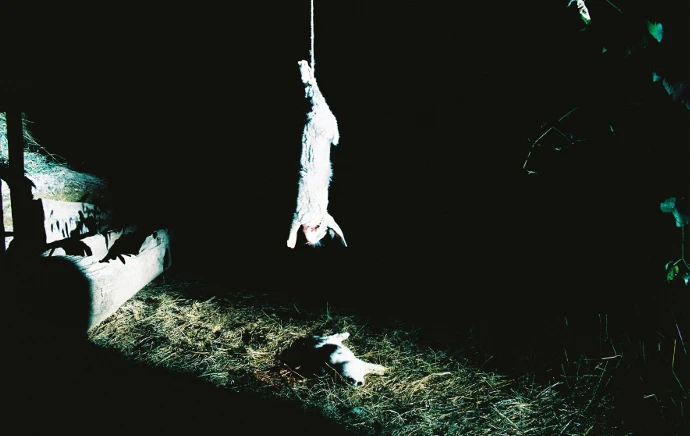
Held on 18, 19, 20, 21, 22, 23, 24, 25, 26, 27, 28, 29, 30 Sep, 01, 02, 03, 04, 05, 06, 07, 08, 09, 10, 11, 12, 13, 14, 15, 16, 17 Oct 2013
In recent years, it has been pointed out that one of the identifying features of Spanish alternative film is the exploration of the real. This series, however, looks at the other side, the return to a narrative that, formulated upon the basis of allegory, expropriated stories and the renewed role of the spectator, flows beyond the space of stories.
Fiction, in the logic of film discourse, is usually considered a closed system that presents an airtight world set up by the filmmaker. The film shoot, following this idea, responds to a rigid staging process designed to ensure the translation of the work from screenplay to moving images. In contrast, the ten films chosen for this series challenge this condition which, using the ideas of Noël Burch, might be described as the exile of chance. With a variety of media and enunciations, the selected filmmakers and artists understand fiction to be a multiplication of experience and a cross between the subjectivities that give it meaning, a meaning that is anything but univocal and instead appears in an ongoing state of interrogation. If more orthodox film generally engages in an image fetishism that, in the sense put forward by Benjamin, erases any tie between the image and its means of production, the films included in Unending Stories use images and their narrative with the opposite intention: as a medium for questioning who, how and from which vantage point the story is told. So, here the story is not a life-like mask by which to convey the real, but rather an element with which to broaden the real.
The Unending Stories program looks into different ways of telling. In the first place, there is telling that uses history's fundamental archetypes, such as in the case of Història de la meva mort by Albert Serra and Finisterrae by Sergi Caballero, treated here from the perspective of allegory and the grotesque. Secondly, the telling can use objects found and resignified within the story, such as La casa Emak Bakia, by Oskar Alegría, and A Story for the Modlins, by Sergio Oksman. Thirdly, stories can be told by examining myth as the repetition that builds identity, whether that of a community, as with Arrianos by Eloy Enciso, or of a territory, as with Conxo in Fóra , by Pablo Cayuela and Xan Gómez Viñas. Fourthly, the telling might entail showing the role of the spectator in the construction of a supposed truth derived from the dispute between image and language, such as in El jurado, by Virginia García del Pino, and Invisible , by Víctor Iriarte. And lastly, there is the telling that develops the fiction as an archive from which to excavate the stories buried by the “film” institution, as in Hollywood Talkies by Óscar Pérez and Mia de Ribot and Negative Inchon by Adrià Juliá.
In short, Unending Stories features a series of recent audiovisual works driven by a new type of narrative that, far from exhausting the real, takes it to a new irreducible state.
Itinerancies
Museo Nacional Centro de Arte Reina Sofía, Madrid
18 September, 2013 - 17 October, 2013
Palacio de los Condes de Gabia. Diputación de Granada
30 January, 2014 - 27 March, 2014
Más actividades

Difficulty. Forms and Political Effects of Deviation in Writing and Contemporary Art
23 February – 14 December 2026 – Check programme
Difficulty. Forms and Political Effects of Deviation in Writing and Contemporary Art is a study group aligned towards thinking about how certain contemporary artistic and cultural practices resist the referentiality that dominates the logics of production and the consumption of present-day art. At the centre of this proposal are the concepts of difficulty and deviation, under which it brings together any procedure capable of preventing artistic forms from being absorbed by a meaning that appears previous to and independent from its expression. By ensuring the perceptibility of their languages, difficulty invites us to think of meaning as the effect of a signifying tension; that is, as a productive and creative activity which, from the materiality of art objects, frees aesthetic experience from the representational mandate and those who participate in it from the passiveness associated with tasks of mimesis and decoding.
The economy of the referential norm translates the social logic of capitalism, where insidious forms of capturing subjectivity and meaning operate. In the early 1980s, and adopting a Marxist framework, poet Ron Silliman highlighted how this logic entailed separating language from any mark, gesture, script, form or syntax that might link it to the conditions of its production, rendering it fetichised (as if without a subject) and alienating its users in a use for which they are not responsible. This double dispossession encodes the political strategy of referential objectivity: with no subject and no trace of its own consistency, language is merely an object, that reality in which it disappears.
The political uses of referentiality, more sophisticated today than ever before, sustain the neoliberal-extractivist phase of capitalism that crosses through present-day societies politically, economically and aesthetically. Against them, fugitive artistic practices emerge which, drawing from Black and Queer studies and other subaltern critical positions, reject the objective limits of what exists, invent forms to name what lies outside what has already been named, and return to subjects the capacity to participate in processes of emission and interpretation.
Read from the standpoint of artistic work, the objective capture of referentiality may be called transparency. Viewed from a social contract that reproduces inequality in fixed identity positions, transparent in this objectivity are, precisely, the discourses that maintain the status quo of domination. Opposite the inferno of these discourses, this group aims to collectively explore, through deviant or fugitive works, the paradise of language that Monique Wittig encountered in the estranged practices of literature. For the political potency of difficulty — that is, its contribution to the utopia of a free language among equals — depends on making visible, first, its own deviations; from there, the norm that those deviations transgress; and finally, the narrowness of a norm which in no way exhausts the possibilities ofsaying, signifying, referring and producing a world.
From this denouncement of referential alienation, fetishisation and capture, Difficulty. Forms and Political Effects of Deviation in Writing and Contemporary Art turns its attention to the strategies of resistance deployed by contemporary artists and poets. Its interest is directed towards proposals as evidently difficult or evasive as those of Gertrude Stein, Lyn Hejinian, Theresa Hak Kyung Cha, Kameelah Janan Rasheed, Kathy Acker, María Salgado and Ricardo Carreira, and as seemingly simple as those of Fernanda Laguna, Felix Gonzalez Torres and Cecilia Vicuña, among other examples that can be added according to the desires and dynamics of the group.
The ten study group sessions, held between February and December, combine theoretical seminars, work with artworks from the Museo Reina Sofía’s Collections and exhibitions, reading workshops and public programs. All these formats serve as spaces of encounter to think commonly about certain problems of poetics — that is, certain political questions — of contemporary writing and art.
Difficulty. Forms and Political Effects of Deviation in Writing and Contemporary Art inaugurates the research line Goodbye, Representation, through which the Museo Reina Sofía’s Studies Directorship seeks to explore the emergence of contemporary artistic and cultural practices which move away from representation as a dominant aesthetic-political strategy and redirect their attention toward artistic languages that question the tendency to point, name and fix, advocating instead for fugitive aesthetics. Over its three-year duration, this research line materializes in study groups, seminars, screenings and other forms of public programming.

CLINIC 2628. A Community of Writing and Research in the Arts
February – October 2026
Clinic 2628 is a project which supports and brings together writings which stem from the intention to offer a space and sustainable time for research work in art and culture. Framed within an academic context which is increasingly less receptive to the forms in which thinking happens and is expressed, the aim is to rescue the academic from its neoliberal trappings and thus recover the alliance between precision and intuition, work and desire. A further goal is to return writing to a commons which makes this possible through the monitoring of processes and the collectivisation of ideas, stances, references and strategies.
The endeavour, rooted in a collaboration between the Museo Reina Sofía’s Studies Directorship and the Artea research group, via the i+D Experimenta project, is shaped by three annual editions conceived as spaces of experimentation, discussion and a demonstration of writings critical of what is put forward by today’s academia.
What forces, forms and processes are at play when writing about art and aesthetics? In academia, in museums and in other cultural institutions, the practice of writing is traversed by productivist logics which jeopardise rhythms of research and experimentation. The imposition of both scientism inherent in the structure of “the paper” and the quantifying of results which demand a criterion of quality and visibility sterilise and smoothen, from the outset, the coarseness that is particular to writing understood from the concrete part of language: phonic, graphic, syntactic and grammatical resistance connecting the language user to the community the language unites and activates. They also sterilise the roughness enmeshed in the same desire to write, the intuitive, clear and confusing pathways that once again connect the writer to those reading and writing, participating in a common good that is at once discovered and produced.
The progressive commercialisation of knowledge propelled by cognitive capitalism moves further away from the research and production of knowledge in artworks and artistic languages and practices. The work of curators and archive, criticism, performances and essays formerly saw a horizon of formal and emotional possibilities, of imagination that was much broader when not developed in circumstances of competition, indexing and impact. Today, would it be possible to regain, critically not nostalgically, these ways; namely, recovering by forms, and by written forms, the proximity between art thinking and its objects? How to write in another way, to another rhythm, with no more demands than those with which an artwork moves towards different ways of seeing, reading and being in the world?
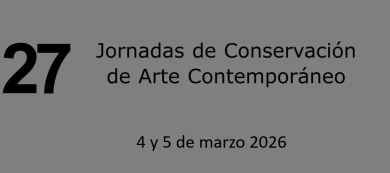
27th Contemporary Art Conservation Conference
Wednesday, 4, and Thursday, 5 March 2026
The 27th Contemporary Art Conservation Conference, organised by the Museo Reina Sofía’s Department of Conservation and Restoration, with the sponsorship of the MAPFRE Foundation, is held on 4 and 5 March 2026. This international encounter sets out to share and debate experience and research, open new channels of study and reflect on conservation and the professional practice of restorers.
This edition will be held with in-person and online attendance formats, occurring simultaneously, via twenty-minute interventions followed by a five-minute Q&A.
Submitting Proposals
The deadline for presenting proposals ends on 28 September 2025. Those interested must send an email to jornada.conservacion@museoreinasofia.es, submitting the following documents:
- An unpublished proposal related to the conservation or restoration of contemporary art.
- A 1,700-word summary, written in Word, on the theme addressed. Please indicate the topic at the top of the document with five keywords and the presentation format (in-person or virtual). Preference will be given to the in-person format.
- CV and contact details.
- Only one proposal per person will be accepted.
- Proposals related to talks given in the last three conferences will not be accepted.
Proposals may be submitted in Spanish, French or English and will be evaluated by a Scientific Committee, which will select the submissions to be presented during these conference days and will determine their possible participation in a subsequent publication, the inclusion of which will undergo a second and definitive evaluation by the Editorial Committee.
For submissions in a virtual format, participants must send a recording following certain technical requirements they will receive once participation is confirmed.
The programme of sessions will be published in the coming days.
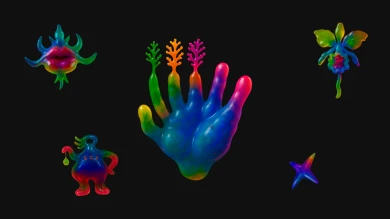
Cultural Work
Thursday, 12 February 2026 – 5:30pm
This series is organised by equipoMotor, a group of teenagers, young people and older people who have participated in the Museo Reina Sofía’s previous community education projects, and is structured around four themed blocks that pivot on the monstrous.
Session number two looks to approach film as a place from which cultural work is made visible and processes of production engage in dialogue with artistic creation. From this premise, the session focuses on exploring how audiovisual content is produced, assembled and distributed, from the hands that handle the images to the bodies that participate in its circulation. The aim is to reflect on the invisible effort, precarity and forms of collaboration that uphold cultural life, that transform the filmic experience into an act that recognises and cares for common work.
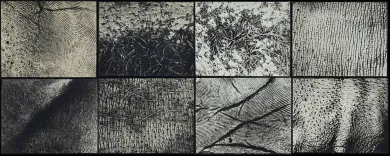
The (legal) person and the legal form. Chapter II
8, 12, 15 January, 2026 – 16:00 to 19:00
As part of the Studies Constellation, the Study Directoship’s annual fellowship, art historian and theorist Sven Lütticken leads the seminar The (Legal) Person and the Legal Form: Theoretical, Artistic, and Activist Commitments to foster dialogue and deepen the hypotheses and questions driving his research project.
This project, titled Unacting Personhood, Deforming Legal Abstraction, explores the dominance of real abstractions—such as exchange value and legal form—over our processes of subjectivation, and asks how artistic practices can open up alternative ways of representing or performing the subject and their legal condition in the contemporary world.
The seminar consists of eight sessions, divided into three chapters throughout the academic year. While conceived as non-public spaces for discussion and collective work, these sessions complement, nourish, and amplify the public program of the Studies Constellation.
In this second chapter of the seminar, the inquiry into the aesthetics and politics of legal form continues with three sessions that pick up the discussions held in Chapter I but propose new lines of flight. The first session focuses on international law via the writings of the British author China Miéville, which allows us to reconsider the notion of the legal form –following Evgeny Pashukanis— and, through it, a variety of (people’s) tribunals. While the crucial concept of the legal person –as the right-holder central to the form of law— was debated in Chapter I, the second session focuses on attempts to extend personhood not (just) to corporations, but rather to nonhuman animals or ecosystems. Finally, the third session poses the question: how can groups and networks use officially recognized organizational forms (such as the foundation or the cooperative) and/or use a collective persona (without necessarily a legal “infrastructure” to match) to act and represent themselves?
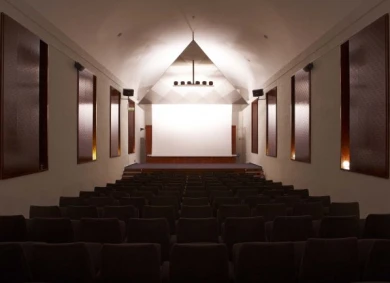
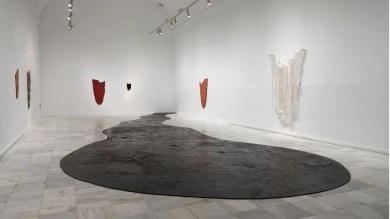
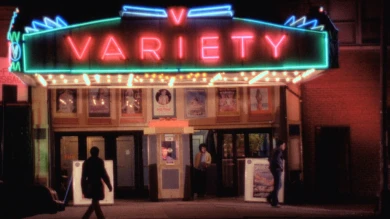
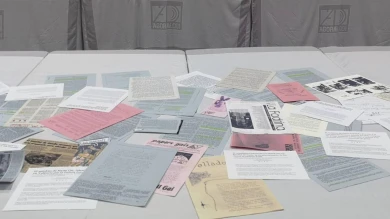
![Miguel Brieva, ilustración de la novela infantil Manuela y los Cakirukos (Reservoir Books, 2022) [izquierda] y Cibeles no conduzcas, 2023 [derecha]. Cortesía del artista](https://recursos.museoreinasofia.es/styles/small_landscape/public/Actividades/ecologias_del_deseo_utopico.jpg.webp)
![Ángel Alonso, Charbon [Carbón], 1964. Museo Reina Sofía](https://recursos.museoreinasofia.es/styles/small_landscape/public/Actividades/perspectivas_ecoambientales.jpg.webp)